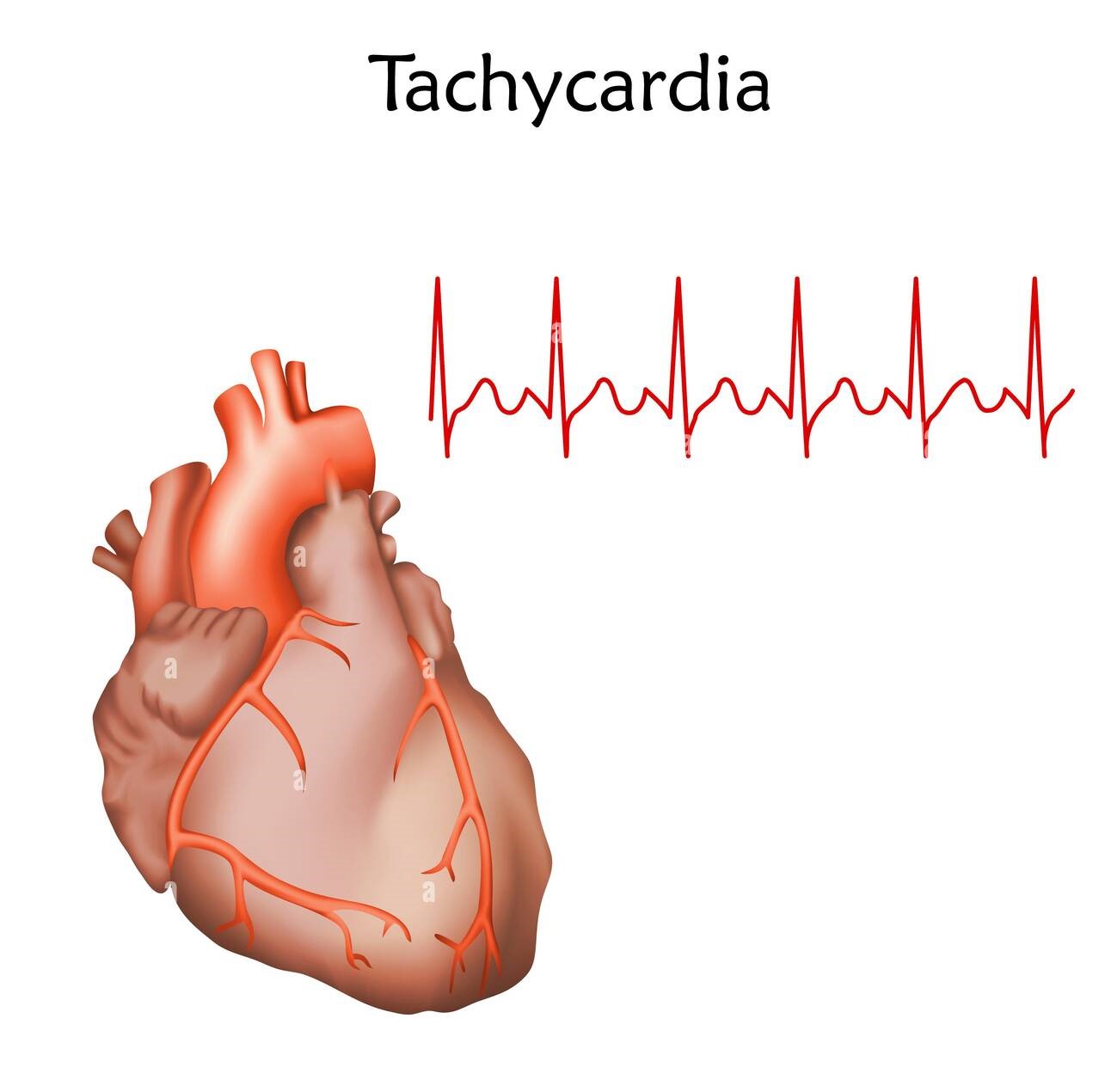
These are situations where the heartbeat becomes irregular or accelerates in a way that makes the person uncomfortable.
For adults, a heart rate above 100 beats per minute when the body is at rest and without any effort is called Heart Palpitation (Tachycardia).
A normal heart beats 60 to 100 times per minute, while in tachycardia this figure reaches 140 and more.
Heart palpitations are usually caused by a disruption in the normal electrical impulses that control the pumping action of the heart.
Some conditions and diseases are among possible causes of tachycardia.
Heart palpitations are the most common tachycardia symptoms. In extreme cases, you may become unconscious and have a heart attack. Some tachycardia attacks may occur without any symptoms.
There are different types of heart palpitations. The types of tachycardia vary from heart rate to which part of the heart it is seen.
It is the most common type of heart palpitation. It occurs due to irregular electrical impulses coming between the small chambers called atria in the upper area of the heart. These irregular signals cause the atria to contract weakly or rapidly. Excessive alcohol, hyperthyroidism, hypertension and heart valve disorders are among the triggering diseases.
Heart valves beating too fast in an irregular way. Because of the speed, the auricles weaken and flutter.
It is a very rapid beating of the lower chambers of the heart.
It is most common in those who smoke and drink heavily.
A very rapid heartbeat with unusual electrical signals in the lower chambers of the heart.
This speed may not allow the ventricles to pump enough blood.
Short attacks may be harmless. However, attacks that last longer than a few seconds can become an emergency.
They are irregular, rapid and electrical impulses. This causes the lower chambers of the heart to vibrate instead of pumping blood throughout the body.
If the heart is not intervened with electric shock, it can cause death. It can be seen during or after a heart attack. It can develop as a result of an underlying heart condition or lightning strike.
For the diagnosis of heart palpitations, first of all, a detailed medical history of the patient is taken. And a physical examination is done.
In the treatment, the factor causing the disorder should be identified and eliminated first. Treatment options vary depending on the cause of palpitation, the patient’s age, and general health.
Some of the methods used in the treatment are:
It is a treatment method that doctors apply without using drugs by directing patients. When the heart beats at a high rate, it demands compelling movements. Vagal maneuvers include coughing, straining, and placing an ice pack on the person’s face.
If there is no change in heart rhythm after performing vagal maneuvers, drug therapy should be initiated. Antiarrhythmic drugs can be administered orally or by injection. It helps to restore a normal heartbeat.
It is the last method preferred in the treatment of tachycardia. In this procedure, an electrical shock is applied to the heart through spoons or tapes attached to the chest.
It is used in the emergency treatment of life-threatening arrhythmias where the pulse cannot be taken in the patient.
Before the heart palpitations become too serious, relief can be achieved with some self-administered measures.
Some of these can be listed as follows:
What is Varicocele? Varicocele is the varicose veins that drain the blood in the testicles,…
What is Hemorrhoids ? It is a disease caused by the loosening of the veins…
What Is Monkeypox Virus? Symptoms and Ways of Transmission! The monkeypox virus, which has been…
What is Pelvic Venous Congestion Syndrome? (Failures Observed in Ovarian/Testicular Veins) What is Pelvic Venous…
What is Myoma ? Myoma, is a benign tumor arising from the uterine muscles. It…
What is Back Lift? Back stretching, excessive weight gain and aging may cause you to…